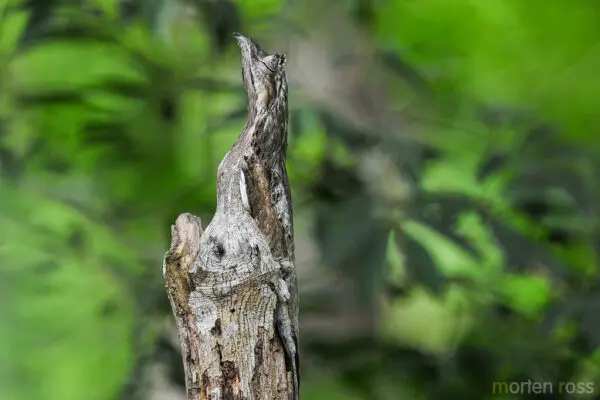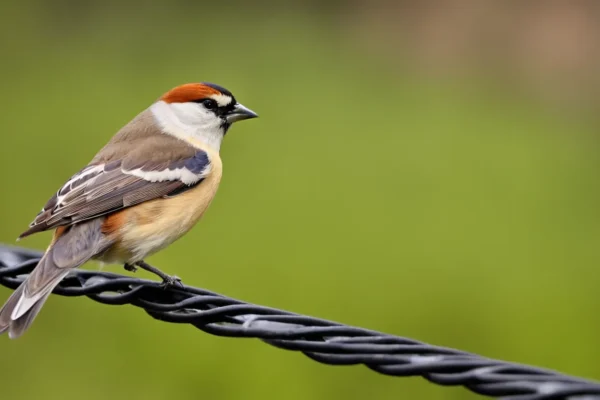With their jet-black feathers, eyes, legs, and beak, crows are a recognisable and gloomy silhouette that most of us are used to seeing. Even though it seems implausible, white crows do sometimes appear. These peculiar corvids are the result of a genetic condition called albinism, which causes the colour pigment melanin to completely disappear from their skin and feathers.
Rarely do albino crows live to maturity in the wild; many die of common health problems caused by genetic abnormalities and their colouring. When someone is seen to be in distress in the wild, they may be brought into the custody of a wildlife rehabilitation facility, where they will not be subjected to the same forces that might endanger their existence because of their unique genetic makeup and appearance.
Comprehending Albinism
Birds with albinism have red eyes, a whitish-pink beak, and pink legs due to a complete absence of melanin in all of their soft body tissues and feathers. Just one out of every 30,000 crows that hatch will have one of these mutations, and even fewer will make it beyond the fledgling stage.
However, the occurrence of a few white feathers in a crow’s plumage is rather less unusual. This is caused by a disorder called leucism, however it has no effect on the body’s soft tissues or components. The bird may have leucism in one or more feathers, but its eyes, legs, and beak will all remain the typical black colour of an ordinary crow.
Occasionally referred to as “partial albinism,” this term isn’t actually appropriate since a bird’s genetic makeup determines whether it is entirely albino or not.
An albino crow is a bird with red eyes, a whitish-pink beak, and pink legs due to a complete absence of melanin in all of its feathers, soft body tissues, and skin.
White spots on a bird’s plumage may also result from dietary circumstances, even if genetics plays a role in leucism. Unusual white patches on feathers may grow from birth in diets low in meat and protein.
It is not rare for crows and jackdaws to have sporadic white colouring on their wings, sides, or tails, and urban populations have been reporting an increase in these birds recently.
Only when both parents have the recessive albino gene may a bird be born with albinism. Tyrosinase, an enzyme required to produce the colour pigmentation in the bird’s body, is absent due to a mutation that arises when two of these genes combine.
The absence of this enzyme prevents the production of melanin, which results in the colourless and thus white look of the bird’s feathers, eyes, legs, and beak.
Leucistic Jackdaw: It is fairly uncommon for Crows and Jackdaws to have sporadically white wings, sides, or tails.
The Physical Features of Albino Crows
The whole plumage of albino crows is white, devoid of any colour from melanin. Because of this, the feathers of the crow vary in appearance from those of a typical crow but also have a weaker structure, making them more prone to break and be damaged quickly. Many albino crows are unable to fly strongly or for extended periods of time due to damage to their feathers.
True albino crows lack colour in their irises and have reddish-pink eyes. Leucistic crows that are completely white may be distinguished from albinos by observing that their eyes are either coloured or black in colour instead of pink.
Because they lack melanin in their skin and delicate body tissue, true albino crows have pink feet and bills. Rather from being considered real albinos, white crows with darker bills or black legs are classified as leucistic.
Because of the absence of pigment in their irises, birds with albinism often have limited vision and a shallow field of view. Similar visual problems are often brought on by damaged blood vessels that harm the optic nerve and retina.
The strength and durability of feathers are also influenced by melanin levels, which may lead to poor flying and an inability to efficiently flee from predators or other threats. Anecdotal observations suggest that albino crows exhibit a notable hyperactivity that distinguishes them from their black flockmates.
A Crow with Albino Hair Since they don’t have any melanin in their skin or soft body tissue, true albino crows have pink feet and bills.
Distribution and Habitat
Since this is a genetic mutation rather than the result of environmental or geographic circumstances, individual albino birds may be produced wherever that a mating pair with recessive genes are present. As a result, it is impossible to anticipate where they will be noticed. People from the United States, the United Kingdom, India, Canada, Estonia, and Germany have previously been documented.
Due to their white plumage, albino crows may blend in less readily and provide less efficient concealment, making them more susceptible to predators in their native environments.
A bird, such as a gull, tern, or a dove, does not always become an accessible prey for predators just because it has white feathers. But any sly predator would naturally find it easy to identify a lone white person amid a group of black birds.
Albino crows have the same call as regular crows, but because of their unusual appearance, they may be alone on feeding grounds and subject to bullying or disregard from other species. Leucistic crows often do not experience this kind of rejection since they are typically not entirely white and do not seem
The albino hooded crow may give birth to an individual bird wherever there is a breeding pair with recessive genes.
Aspects of Behaviour
Social conduct
The adage “birds of a feather flock together” is especially applicable to albino crow incorporation into bigger groups.
It has been seen that albino crows are ostracised, abandoned to feed on the periphery rather than in the center of the flock, and harassed or avoided by their fellow corvids. Because they stand out from the uniform black of a big group, pure white birds are more likely to attract the attention of a predator, which might endanger other adjacent birds.
This isn’t the case for crows that have smaller patches of white feathers or those that are leucistic. They get the same treatment as the rest of their flock, who are all totally black.
Behaviour when mating and raising children
Because of their colouring, poor vision, and weaker feathers, which put them in danger of predation, albino crows don’t often have lengthy lives. Since many of them never grow to be of reproductive age, their recessive albino gene is often not passed on to subsequent generations.
Voices
Crows with typical black plumage and albino crows vary greatly in appearance, although they cannot be distinguished acoustically.
Observations and Recordings
Global sightings with documentation
Because albino crow sightings are so uncommon, news of them is enthusiastically disseminated online, drawing a lot of attention in the form of photographs and videos. A fledgling albino Fish Crow was found in Connecticut in 2023. It was having trouble flying and had visual issues, so it was sent to a wildlife rehabilitation facility.
When seeing an abnormally white crow-shaped bird from a distance, it might be difficult to determine if it is an albino or leucistic crow or whether it is a jackdaw or raven with comparable pigmentation problems. In 2022, there were many recordings of this kind in North Wales, however the identity of the individual was not entirely established. Photographs reveal that the bird’s eyes were black, not red, even though its whole plumage was white, leading some experts to surmise that it was a leucistic crow.
Leucistic Jackdaw – It may be difficult to determine from a distance if a strangely white bird like a crow is albino or leucistic, or whether it might be a jackdaw or raven with comparable pigmentation problems.
Contributions to mythology and folklore
Any colour of crow is seen as a bad omen, a sign of imminent disaster or misfortune, in some cultures. But in other regions of the southern United States, albino crows are associated with more positive meanings; they are a real blessing, a sign of honesty and cleansing.
Photographing and observing birds: advice for amateurs
For any bird lover, non-intrusive still photos and videos of albino crows are a priceless find. It’s crucial to avoid invading a bird’s environment or causing them any worry or fear while taking pictures of them.
The greatest odds of positively identifying your unique encounter will come from taking focused pictures from a safe and respectful distance, especially in the natural light around dawn and sunset.
Ethics and Preservation
Because albino crows are so uncommon, they might be taken by shady pet dealers or targeted for exotic prize hunting.
Due to health problems and greater difficulties surviving in the wild, albino crows have a shorter life expectancy than “normal” crows. For this reason, it’s a good idea to report any sightings to a registered wildlife organization so they can keep an eye on the bird and determine whether or not to take action to ensure its safety.
Because of their very unique look, bird breeders would be tempted to try selectively breeding albino birds, but there are many ethical issues with this because of the significant health risks and genetic deficiencies involved.
Final Thoughts
The precise number of people afflicted by the hereditary disorder globally is unknown. True albino crows are a very unusual phenomenon, with entirely white plumage, red eyes, and whitish-pink legs and beaks. All we know is that these birds are rare enough to always be met with a great deal of curiosity upon sighting reports.
Less of a surprise are crows with patches of white feathers mixed in with their typical black plumage; around 1% of crows have anything from a few white flight feathers to almost full snowy white plumage, in stark contrast to the deep black coloration that is often associated with these impressive corvids.
These partly white birds are not as severely impacted by their illness, known as leucism, and they have an easier time surviving with their black flockmates.
With their completely white feathers, scarlet eyes, and pale pink legs and beaks, true albino crows are an incredibly uncommon sight.
FAQs
How should I respond if I come upon an albino crow?
If you’re fortunate enough to see an albino crow, the best thing to do is to just watch it from a distance and take in one of nature’s unique wonders.
As these birds are very rare, recording your sighting with pictures or video is a useful method to record your sighting and may be worth sharing with local birding clubs or wildlife organisations provided it’s safe to do so and doesn’t disrupt the bird.
What distinguishes an albino crow from other white birds?
In addition to having pure white feathers, a real albino crow will also have red eyes, whitish-pink legs, and a beak. It is exactly like other typical black crows in terms of size and form, and it behaves like other corvids.
When distinguishing albino crows from leucistic crows, one may see the colour of their legs and eyes. While some birds may have white colouring on some or all of their feathers, real albinos will have dark eyes and black legs.
How likely is it that you will come across an albino crow in the wild?
One truly albino crow is found for every 30,000, and around 1% of crows exhibit some degree of leucism. The population of albino crows in the wild is unknown, however, seeing one would undoubtedly be considered a very uncommon occurrence.
Are albino crows able to have children with typical pigmentation?
A recessive gene is the source of the complicated genetic disorder known as albinism. Albino parents often give birth to children with normal pigmentation, however, there is a potential that kids may also be albino if both parents inherit the recessive gene.
It’s important to note that few albino crows make it to maturity because of their coloring and related health issues.




![Raven vs Crow [Everything you need to know]](https://birdsology.com/wp-content/uploads/2023/09/53-600x400.jpg.webp)
